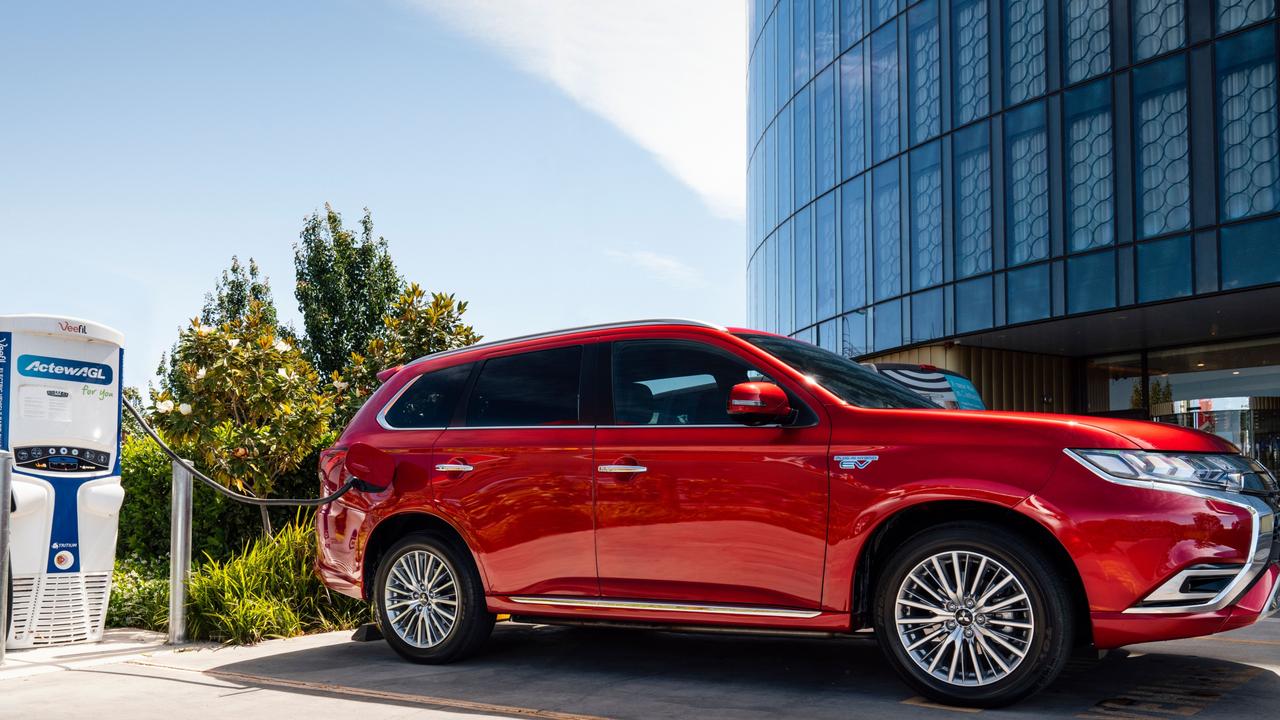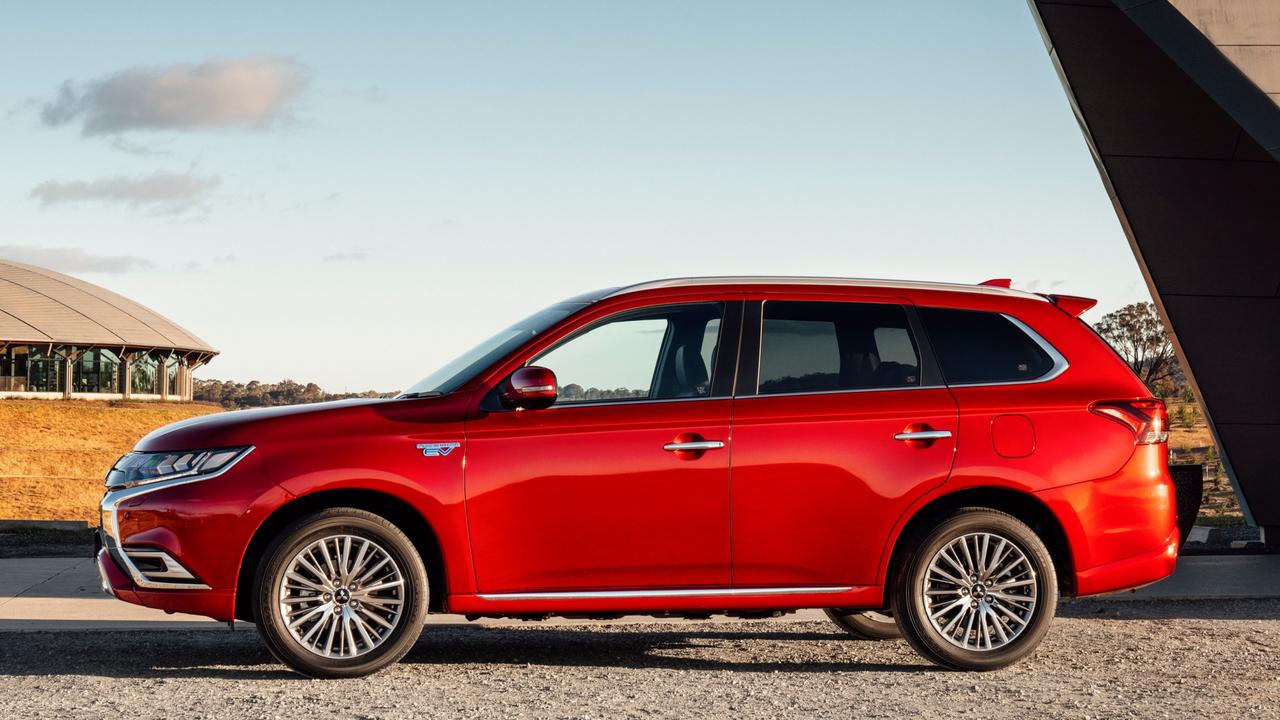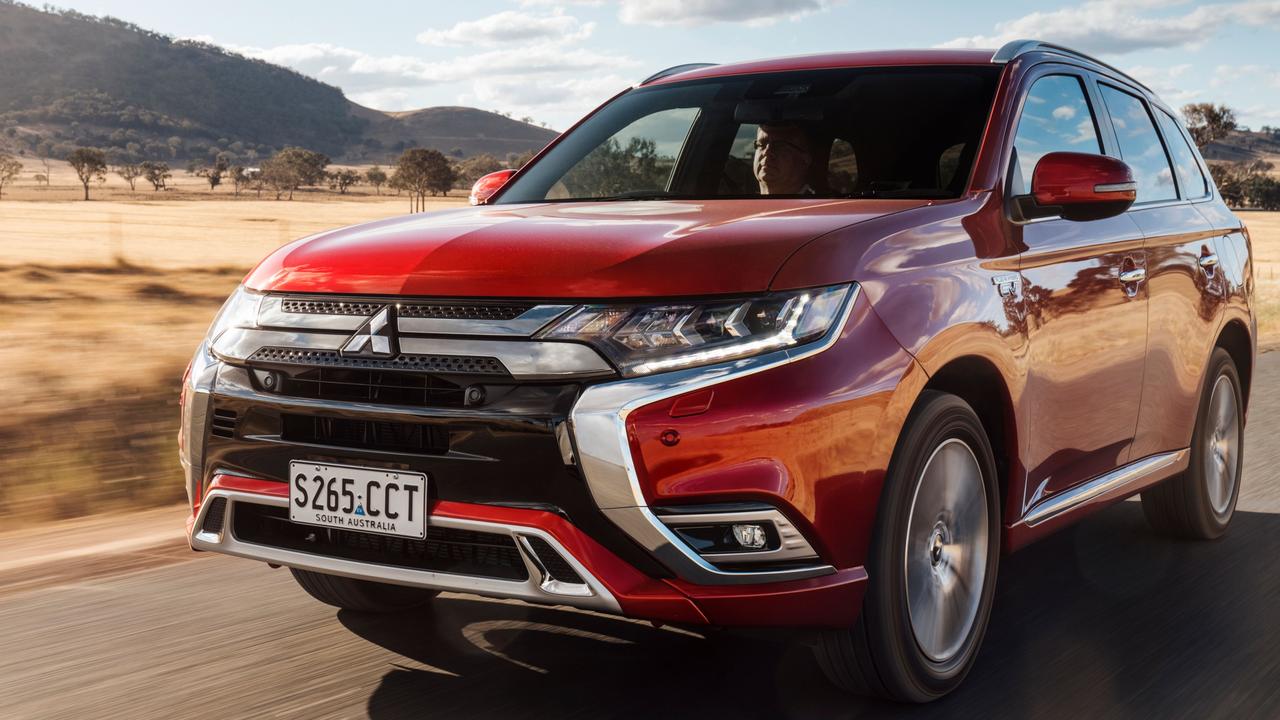Mitsubishi Outlander Exceed PHEV review: Plug-in hybrid still has some juice left
This Japanese SUV was ahead of the pack when it first launched, with crazy fuel use and cutting edge tech, but is it still at the top of its game?

The Mitsubishi Outlander PHEV was one of the first mainstream cars to come as a plug-in hybrid in Australia, it has insane fuel efficiency and the option for extensive electric only driving. But as a new breed of hybrids – led by Toyota’s outstanding RAV4 – land in Australia, is the PHEV still a quality option? We find out.
Here are five things you need to know about Mitsubishi’s Outlander PHEV.

MORE THAN MOST CARS, THIS REALLY IS A HYBRID
The Mitsubishi Outlander PHEV is a “plug-in hybrid electric vehicle”, which means you must plug it into power outlets to charge its battery. The Outlander bridges the gap between conventionally-powered and dedicated electric vehicles, offering the best of both worlds by blending the zero-emissions city running of an electric car with the easy long-distance running of a petrol SUV.
Updated for 2020, the latest Outlander PHEV has a 2.4-litre petrol engine with a 7kW/13Nm advantage over the original model’s 2.0-litre motor. It works in league with a 60kW front electric motor and 70kW rear motor fuelled by a revised 13.8kWh battery.

IN A PERFECT WORLD, THE OUTLANDER PHEV WOULD BE A GIANT KILLER
The sum total of its three motors would make for a punchy crossover, and its official fuel 1.9L/100km fuel figure is hard to beat. At that rate, with a full battery and 45 litres of fuel on board, the Outlander would offer more than 2000 kilometres of driving range. But the hybrid system doesn’t work like that.
Its combined peak power is a little more than 160kW, and the 1.9L/100km figure is a largely theoretical one derived from government fuel tests. In the real world, an Outlander with a full battery charge can run on electric power alone for about 50 kilometres, then burn about 8L/100km when the battery is flat.
Folks who charge the battery diligently will use almost zero fuel during the school run or urban commute.

IT SUITS A DILIGENT DRIVER
A UK survey of Outlander PHEV owners showed more than two thirds charge their cars every day, completing around half their driving in electric-only mode.
A smartphone app allows you to schedule the Outlander’s charging for off-peak electrical periods, and shift paddles on the steering wheel encourage drivers to manually set their desired level of brake regeneration to top up the battery or let the car free-wheel as required.
If that sounds like too much hassle, Toyota’s fuss-free “self-charging” hybrid range might be a better bet.

THE TECHNOLOGY ISN’T CHEAP
The basic petrol Outlander with an automatic transmission and seven seats costs $31,490 drive-away, while a fully-loaded Exceed version with leather trim, a sunroof and powered tailgate costs $46,190 drive-away.
A hybrid model with the same level of equipment will set you back $60,390 drive-away, bringing features such as an 8-inch touchscreen with smartphone mirroring, heated seats, a 360-degree camera and comprehensive suite of driver aids. The catch is the hybrid model only has five seats (the petrol version gets seven) and its battery fills space required by a spare wheel (replaced by an inflator kit).

IT’S A MIXED BAG ON THE ROAD
Mitsubishi’s hybrid tech is seriously clever – it’s one of the reasons Renault and Nissan merged with the Japanese company back in 2016, and you can expect to see it in future models. It’s nifty to use petrol to charge its battery while on the road, then run in pure electric mode once you reach an urban centre.
Beyond that, the Outlander Exceed is spacious and well-equipped, but plain to behold. It’s not cheap, and it’s a step behind best-in-class models such as the Toyota RAV4 or Mazda CX-5 on the road, with a firmer ride and roly-poly responses. But customers attracted to its special powerplant will look past its shortcomings.
MITSUBISHI OUTLANDER PHEV EXCEED VITALS
Price: From $60,390 drive-away
Engine: 2.4-litre petrol plug-in hybrid, 164kW combined
Warranty/Service: 7-year/u’ltd km,
Safety: 5 stars, 7 airbags, auto emergency braking, active cruise control, lane keeping assistance, rear cross traffic alert
Fuel use: 1.9L/100km
Cargo: 463 litres
Spare: Inflator kit



